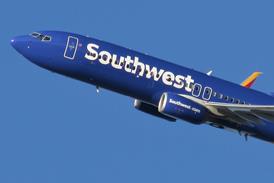
NASA will de-orbit its Compton Gamma Ray Observatory satellite sometime after 1 June, following the failure of one of its three gyroscopes.
The US space agency has decided to de-orbit the Compton, the second in NASA's Great Observatory series - which was deployed from Space Shuttle Atlantis in April 1991 - before the other gyros fail. The 17t spacecraft should make a controlled re-entry using the working units.
The Compton will not burn up completely on re-entry and NASA wants to ensure that surviving debris will land in an uninhabited area of the Pacific within a 25.6 x 1,439km flightpath corridor centred on the equator at 120°W, 4,000km (2,500 miles) south-east of Hawaii, and extending as far as 28.5° north or south latitude.
Compton has exceeded its predicted maximum five-year mission lifetime, returning details from 400 gamma ray sources - 10 times more than previously detected - and recording 2,500 gamma ray bursts - 2,200 more than have previously been observed. Other members of NASA's Great Observatory series in orbit are the Hubble Space Telescope and the Chandra X-ray Observatory.
Source: Flight International























